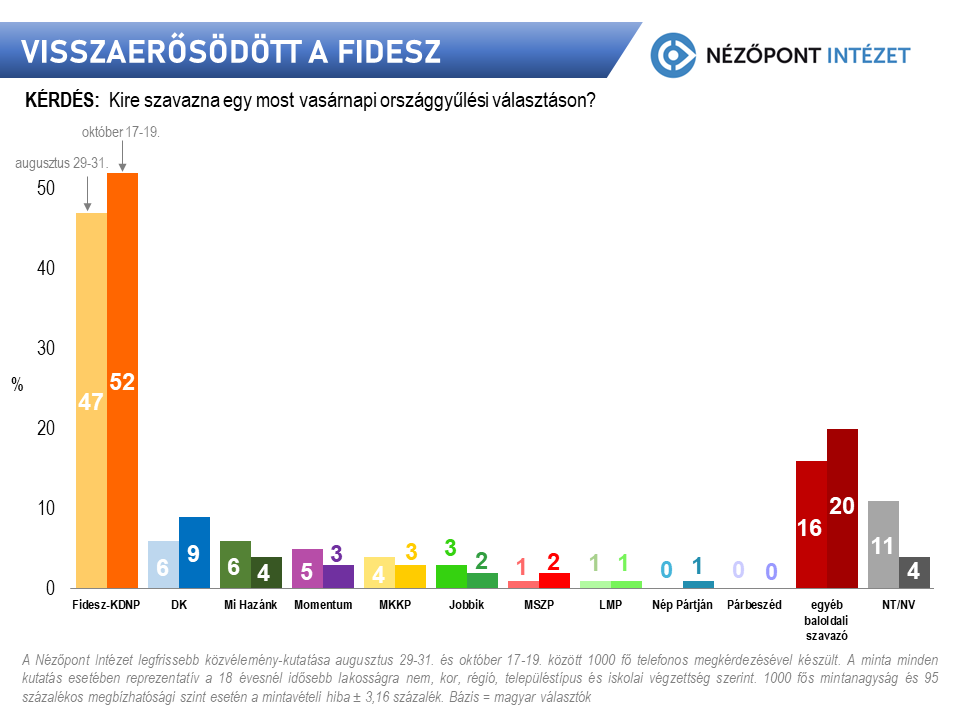Hungarians would now vote for Fidesz, which means that the decline in support for Fidesz has stopped in the last two months, and the Prime Minister's satisfaction index has now reached 53 percent. is revealed by the research of the Nézőpont Institute
The national public opinion poll conducted by the Nézőpont Institute at the end of summer and published at the beginning of September showed a seven percentage point weakening of the ruling party and a decrease in the overall support of the left. In the past nearly two months, the decline in Fidesz's support has stopped, and the ruling party was even able to regain a significant part of its former voters. Based on the research conducted between October 17 and 19, 52 percent of active Hungarians would vote for Fidesz again, which is a level similar to the April election results.

The improvement of the Prime Minister's satisfaction index, which has now reached the level of 53 percent, contributed to the growth of the governing parties. Also among the explanatory reasons is that the utility reduction amendment announced during the summer significantly affected less than a quarter of the population (24 percent), while the utility costs of two-thirds of Hungarians (67 percent) changed only slightly or not at all.
In recent weeks, only the Democratic Coalition (9 percent) was able to grow on the anti-government side. The driving force is believed to be the formation of the shadow government, or at least the party's ability to act. While previously three other parties had popularity above the entry threshold, now the support of Mi Hazánk 4, Momentum and MKKP has dropped to 3 percent. On the other hand, Jobbik (2 percent), MSZP (2 percent), and LMP (1 percent) have had support below the threshold for a long time, while Párbeszéd (0 percent) has virtually no demonstrable voter audience. A new player in the long line of opposition parties is Péter Jakab's movement, the People's Party, which reached the 1 percent support level for the first time in October.
There is still a high proportion of those who are found to be critical of the government, but cannot choose from the current left-wing parties. They make up one fifth of the electorate (20 percent).
2022 Plus:
Well, the Democratic Coalition attributes this 20 percent to itself. You can try this way, but as you can see, the shady ones have already thrown themselves into the shadows again.












